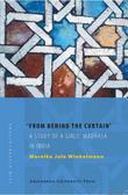Explore

Gedurende de nasleep van 11 september 2001 kregen de islamitische hogescholen, oftewel de madrasas, veel aandacht in de Indiase media. Dit kwam voornamelijk door de veronderstelde schakel tussen madrasa onderwijs en vormen van geweld. Terwijl veel bekend is over madrasas voor jongens bleven soortgelijke onderwijsinstellingen voor jonge vrouwen tot dusver betrekkelijk onttrokken aan de publieke aandacht. Dit onderzoek belicht de vraag hoe islamitische scholen voor jonge moslim vrouwen tot stand zijn gekomen in India, hoe zij zich onderscheiden van madrasas voor jongens, en hoe de jonge vrouwen islam interpreteren n.a.v. wat hen bijgebracht wordt. Observaties geven aan dat naast het officiële curriculum het informele curriculum een even belangrijke rol speelt. Het draagt bij aan het grotere doel van de madrasa, namelijk de hervorming van de moraliteit van de studenten en het bepalen van hun handelingen in lijn daarmee.
This book is included in DOAB.
Why read this book? Have your say.
You must be logged in to comment.
